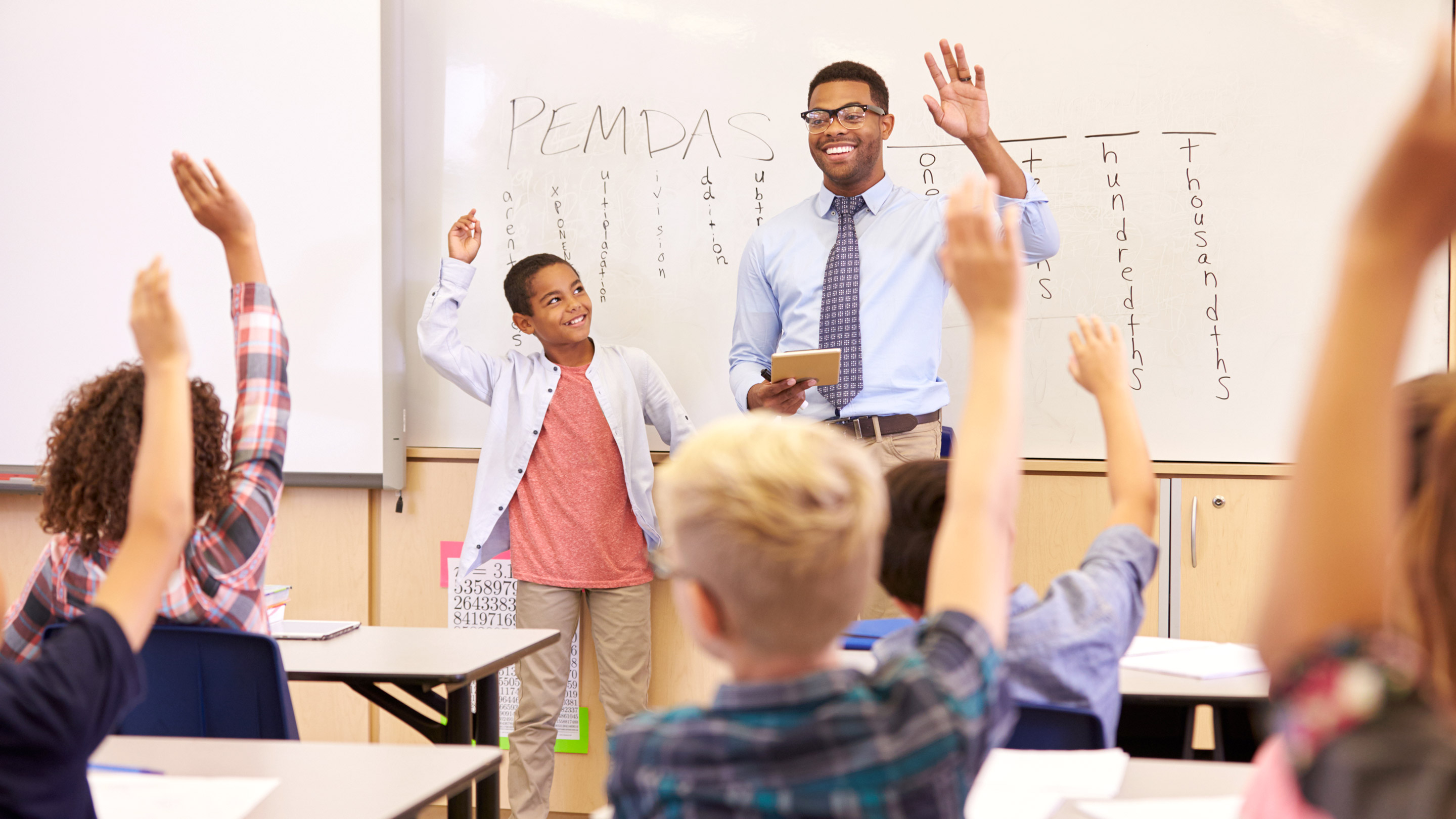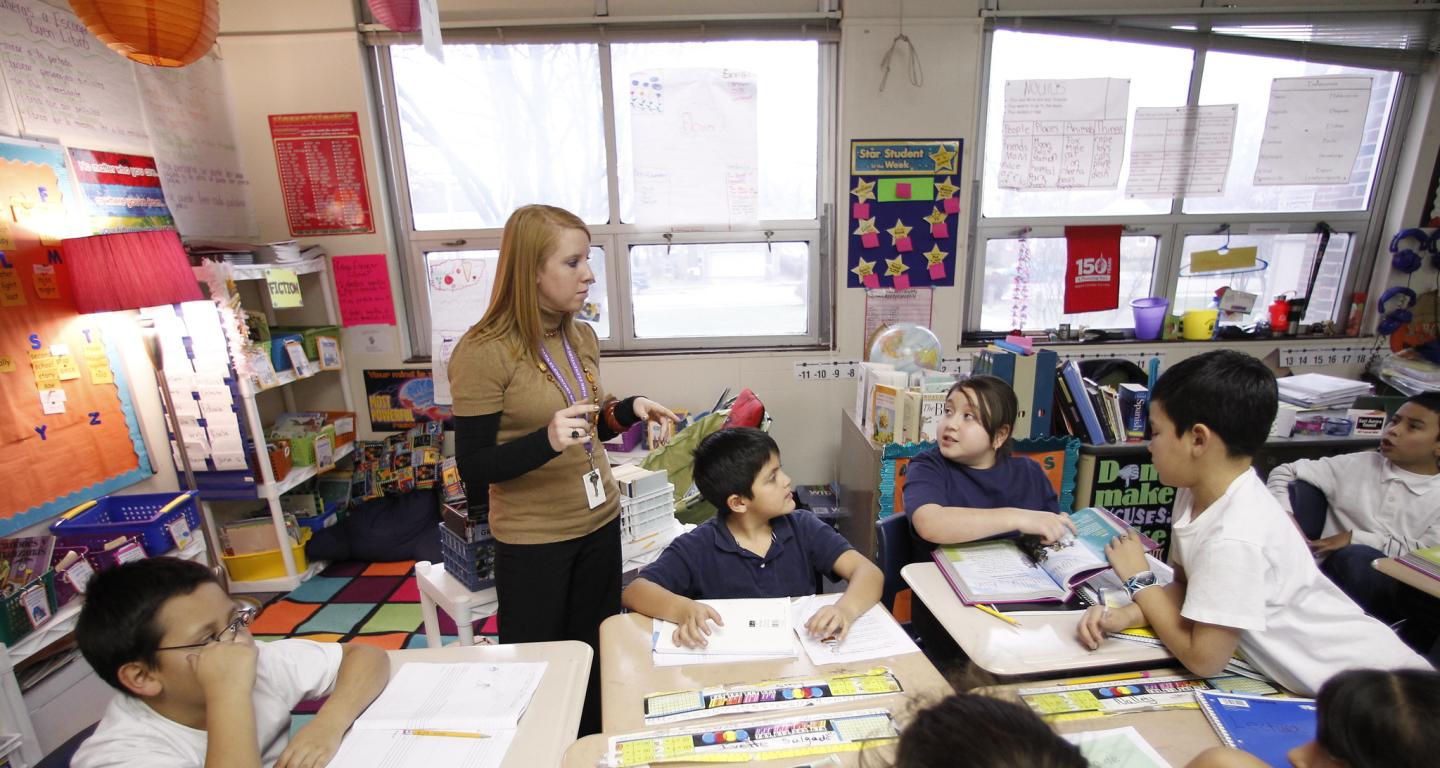Effective Primary Science Tuition Singapore for Better Exam Results
Effective Primary Science Tuition Singapore for Better Exam Results
Blog Article
A Comprehensive Guide to the Various Discovering Techniques in Key Scientific Research Direction
The expedition of diverse understanding techniques in primary science direction offers a possibility for instructors to improve student involvement and comprehension significantly. By checking out hands-on discovering techniques, inquiry-based methods, and collective strategies, we can identify reliable methods that deal with various discovering designs. In addition, the integration of technology and separated guideline plays a critical role in promoting a comprehensive environment. The question continues to be: how can these techniques be efficiently executed in the class to optimize their impact? The response exists in a better assessment of each strategy and its implications for teaching science.

Hands-On Discovering Strategies
Hands-on discovering methods play a pivotal function in primary scientific research guideline, involving trainees in energetic exploration and trial and error. These methods enable learners to connect straight with phenomena and materials, fostering a deeper understanding of scientific concepts. By utilizing manipulatives, designs, and real-life experiments, teachers develop an environment where trainees can observe, hypothesize, and examine their concepts.
Such methods not only improve comprehension but likewise cultivate vital reasoning and problem-solving abilities. When pupils get involved in activities like developing straightforward equipments, planting seeds, or conducting chemical reactions, they are encouraged to ask concerns and seek solutions through their own monitorings. This experiential technique aids to demystify complicated clinical concepts, making them much more easily accessible and relatable.
Additionally, hands-on learning promotes cooperation amongst peers, as students commonly operate in teams to perform experiments or share findings. This team effort not only enhances their knowing experience yet likewise develops necessary social abilities. Eventually, incorporating hands-on strategies in primary scientific research instruction cultivates a long-lasting love of understanding and inquisitiveness regarding the environment, laying a solid structure for future scholastic quests in science and past.
Inquiry-Based Learning
Inquiry-based learning is an instructional technique that urges trainees to ask concerns, explore phenomena, and create their very own understanding of clinical principles. This method moves the focus from standard teacher-led instruction to an extra student-centered experience, where students take the effort in their educational trip. By fostering curiosity, inquiry-based understanding advertises deeper involvement with the product, allowing students to explore subjects in a purposeful context.
In practice, this strategy frequently entails hands-on experiments, monitorings, and crucial reasoning activities that align very closely with the scientific method. Pupils are motivated to develop theories, style investigations, and assess data, which cultivates crucial skills such as analytical and problem-solving thinking. The duty of the instructor in this framework is to promote expedition, directing pupils with the query process while encouraging independent idea and cooperation.
Furthermore, inquiry-based learning supports a feeling of possession over the understanding process, encouraging students to seek expertise proactively. This technique not only enhances understanding of clinical ideas but also fosters a lifelong love for knowing, outfitting students with the skills essential to navigate an increasingly intricate world.
Collaborative Discovering Approaches
Collective learning techniques encourage trainees to participate in significant communications with peers, promoting a shared responsibility for their academic results. In main scientific research direction, these strategies urge learners to collaborate to explore clinical ideas, address issues, and perform experiments (primary science tuition Singapore). By joining team activities, students can utilize varied perspectives, enabling for richer understanding and retention of scientific knowledge
One trick element of joint understanding is the emphasis on interaction abilities. Trainees should express their thoughts, pay attention proactively to others, and bargain ideas, all of which are important competencies in both real-world and scholastic contexts. This social communication not just boosts their understanding of clinical principles however also advertises team effort and conflict resolution abilities.
Moreover, collaborative understanding usually causes raised inspiration and involvement. When pupils see the value of their contributions within a team, they are most likely to take ownership of their learning trip. Educators can facilitate this process by developing structured team jobs that align with educational program goals while supplying guidance on reliable partnership methods. Generally, including collective learning strategies in key science direction cultivates a vibrant discovering environment that prepares students for future academic and social challenges.
Technology Assimilation in Scientific Research
The combination of modern technology in primary science guideline boosts finding out experiences by giving cutting-edge devices and sources that support various teaching methods, consisting of joint knowing - primary science tuition Singapore. Using digital systems, simulations, and interactive applications enables students to involve deeply with clinical principles, assisting in a much more hands-on method to understanding
Virtual laboratories, for example, make it possible for learners to conduct experiments safely and successfully, promoting inquiry-based discovering. These devices can mimic real-world scientific scenarios, allowing pupils to picture complex processes that would certainly be difficult to replicate in a typical classroom setting. Technology fosters interaction and partnership amongst pupils, as they can share findings and function with each other on jobs with online platforms.
In addition, multimedia presentations and academic video clips can improve lessons by satisfying diverse learning styles, making abstract principles extra accessible. Data evaluation devices likewise encourage students to accumulate and interpret scientific information, reinforcing essential assuming skills. Generally, the calculated consolidation of technology in key science direction not only boosts interaction but likewise prepares trainees for a technologically advanced society, outfitting them with important abilities for future scientific endeavors.
Set Apart Direction Methods
Distinguished guideline methods are important for dealing with the varied needs of learners in primary science education and learning. These techniques enable teachers to customize their teaching methods to suit varying abilities, passions, and discovering styles within the classroom. By using distinguished direction, educators can develop an inclusive atmosphere that fosters engagement and boosts understanding of clinical ideas.
One reliable technique is to use adaptable grouping, which allows trainees to team up with peers at page similar skill levels or with varying viewpoints. This method motivates peer knowing and promotes important thinking. Additionally, supplying selections in tasks can equip students, permitting them to choose jobs that reverberate with their rate of interests while still satisfying curricular purposes.
Additionally, integrating tiered tasks is another important technique. Deliberately tasks with find this varying levels of complexity, instructors can guarantee that all students are appropriately tested, no matter their effectiveness. Making use of formative assessments to determine comprehending additional allows instructors to adjust their educational approaches dynamically, making sure that each student receives the assistance they need.
Eventually, carrying out set apart instruction approaches in key scientific research education and learning not just boosts pupil knowing outcomes but additionally cultivates an interest for science, preparing trainees for future scholastic quests.

Conclusion
In recap, effective primary scientific research instruction necessitates a multifaceted method that includes hands-on discovering, inquiry-based approaches, and joint methods. The combination of technology and differentiated guideline even more provides to varied discovering Full Article styles, cultivating an atmosphere helpful to exploration and crucial reasoning.
The expedition of varied knowing approaches in key scientific research direction offers a chance for teachers to boost trainee engagement and comprehension substantially.Hands-on discovering strategies play an essential duty in key scientific research guideline, engaging pupils in energetic expedition and testing.Inquiry-based discovering is an educational method that motivates trainees to ask inquiries, explore phenomena, and create their own understanding of scientific principles.Collaborative knowing strategies equip trainees to involve in meaningful communications with peers, fostering a shared duty for their academic end results. In general, including joint understanding strategies in main scientific research guideline grows a vibrant understanding setting that prepares trainees for future scholastic and social obstacles.
Report this page